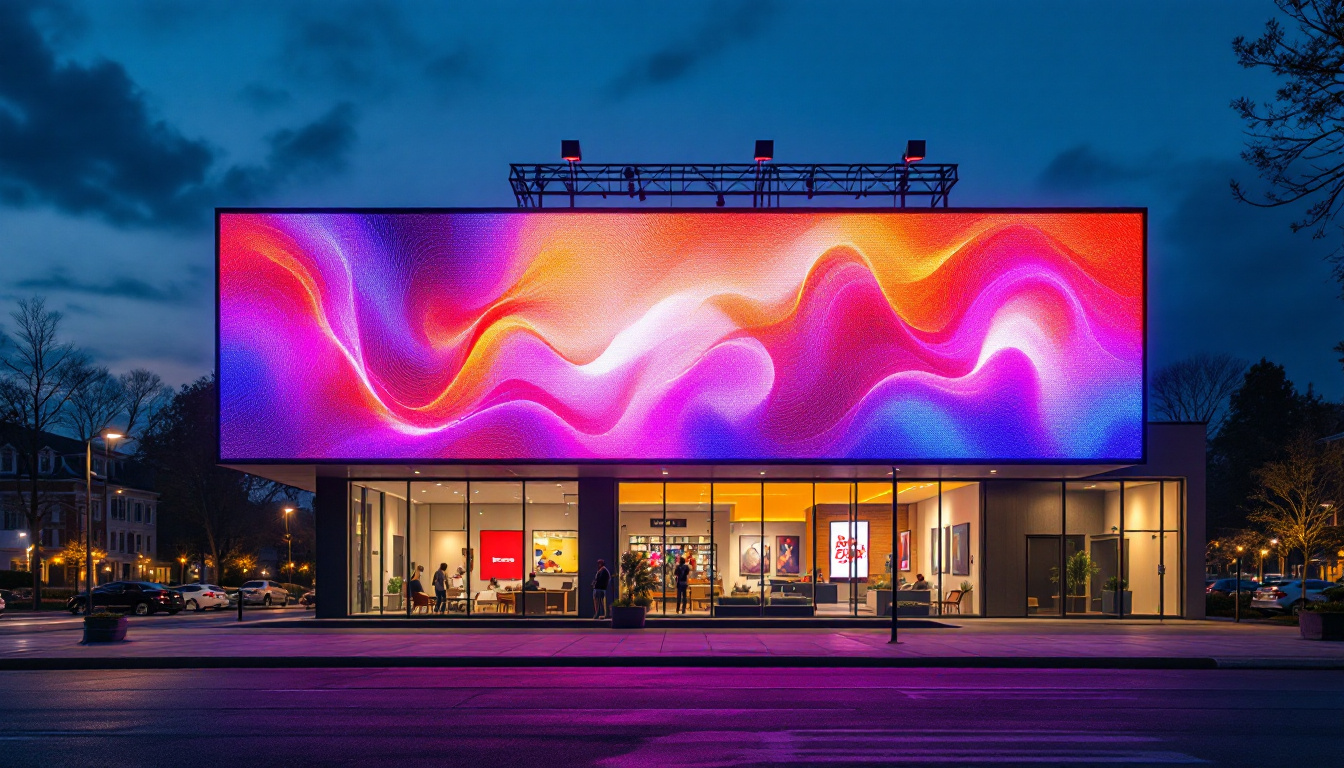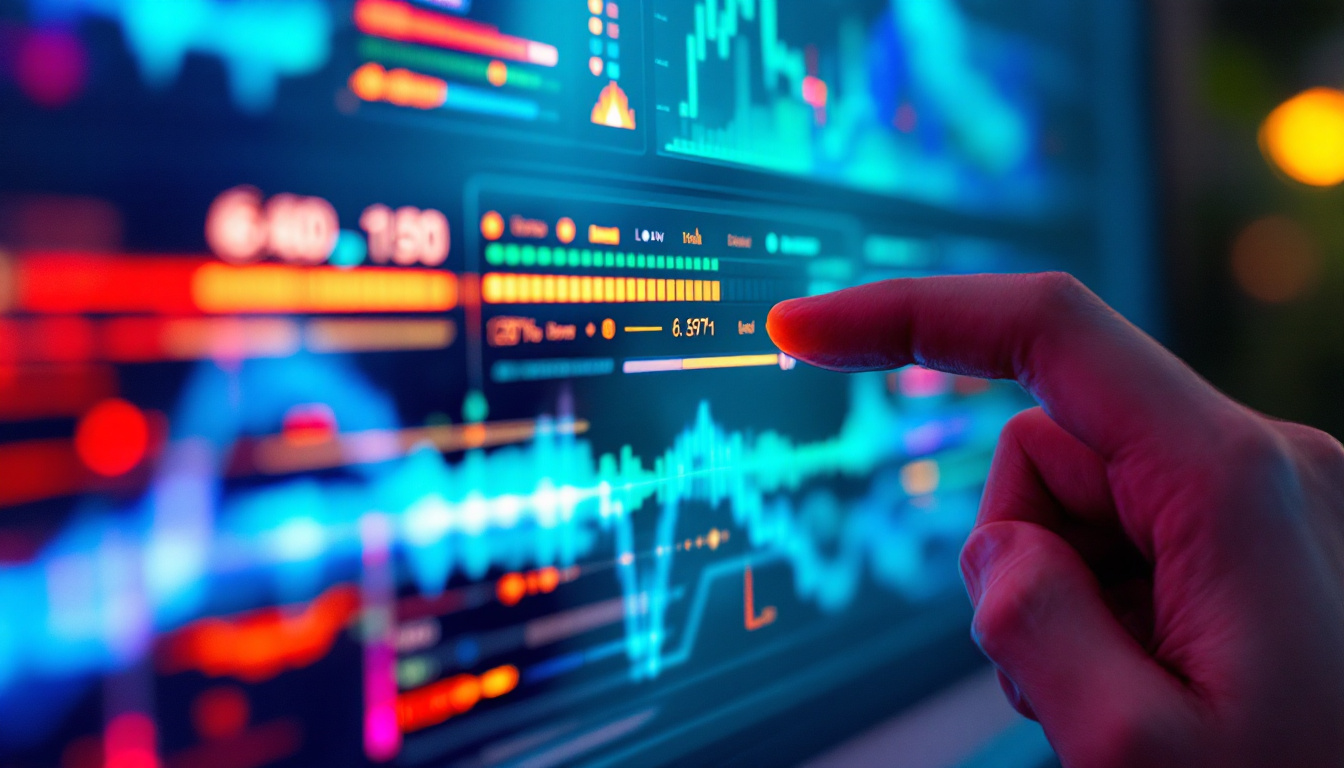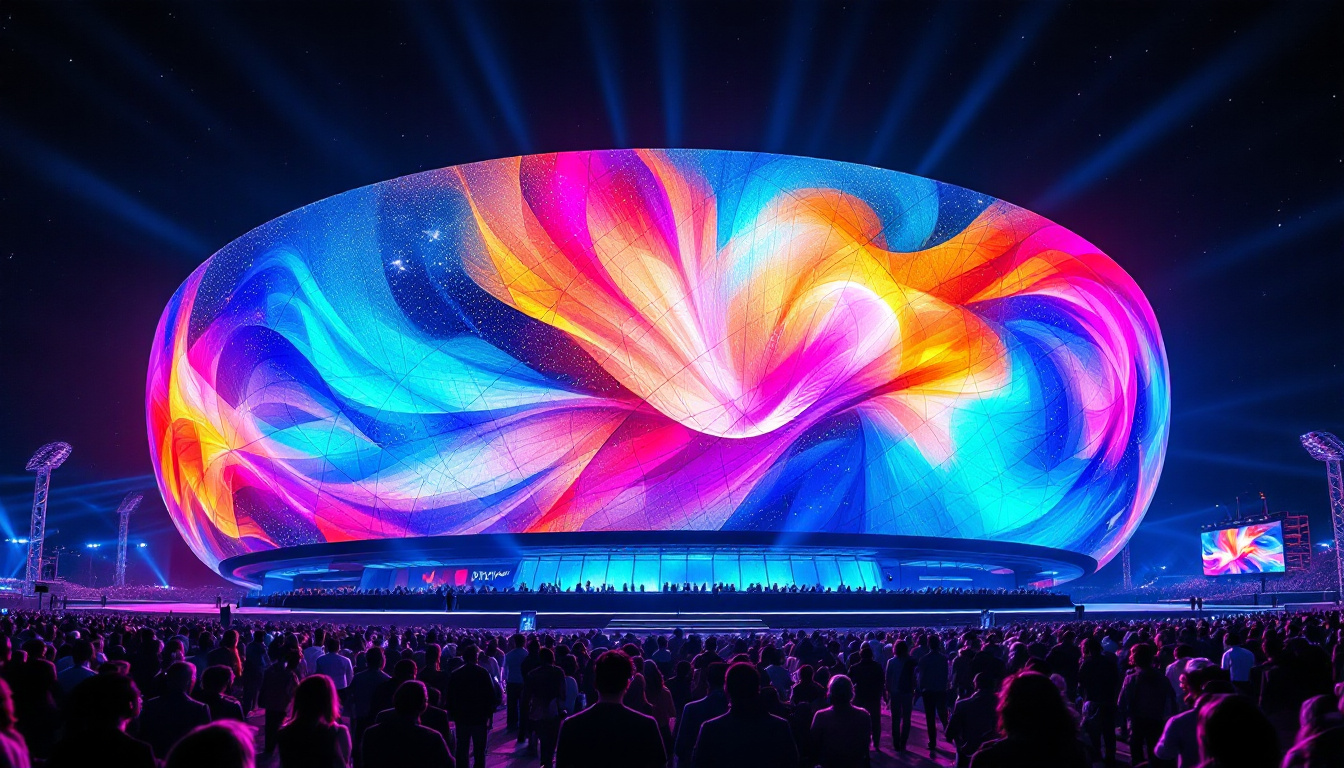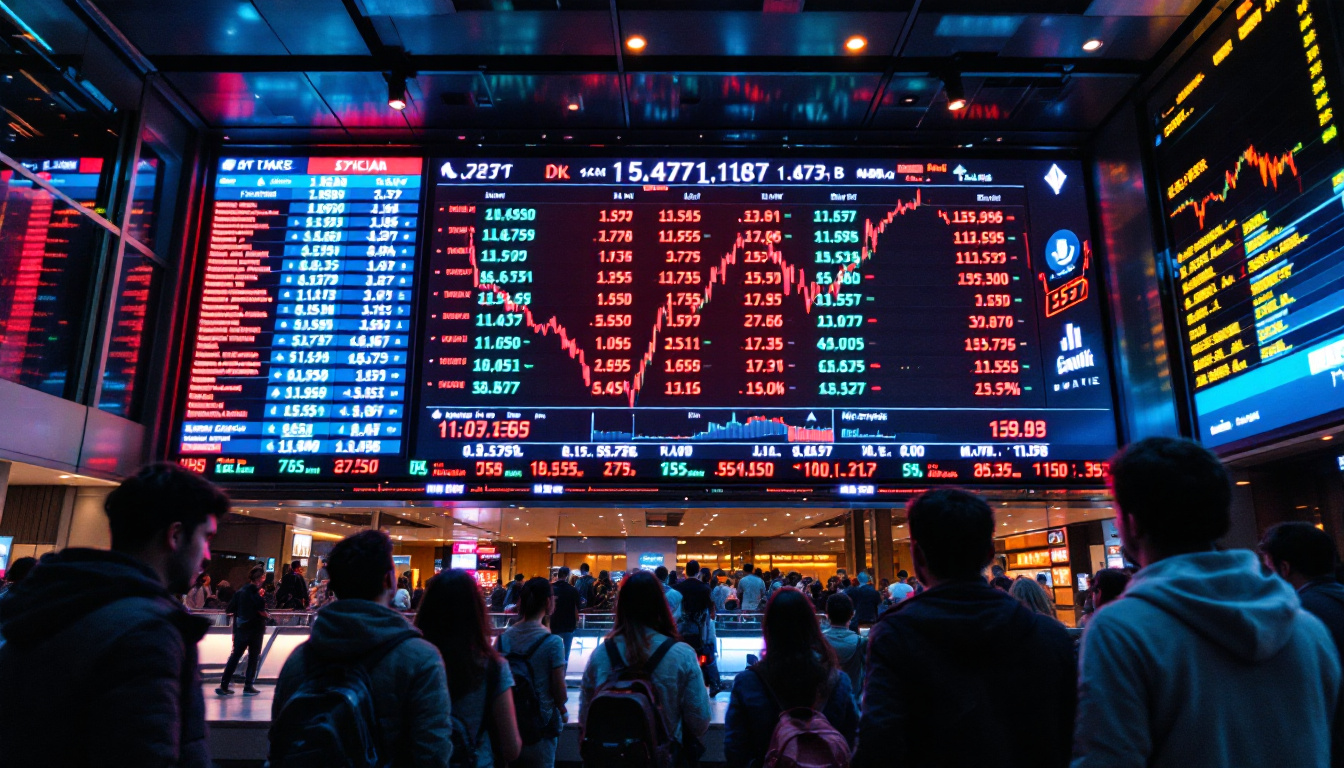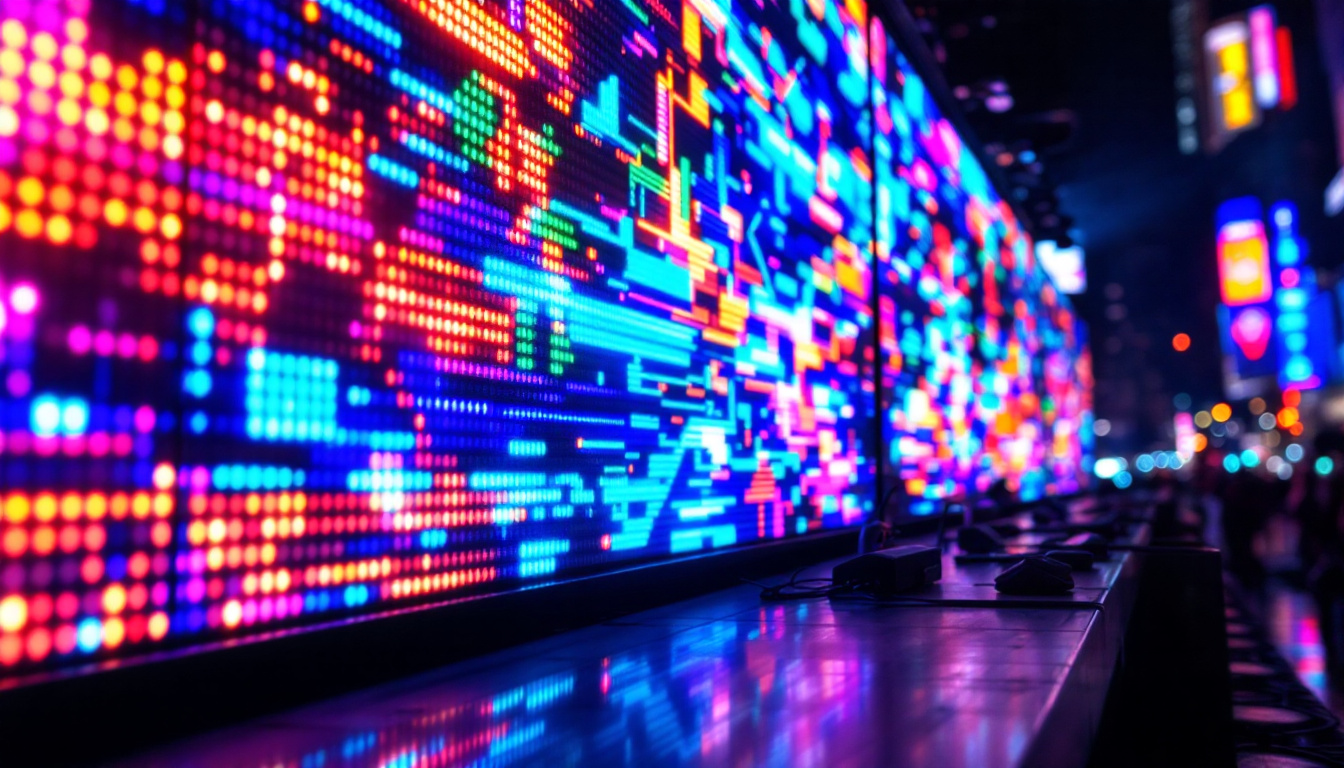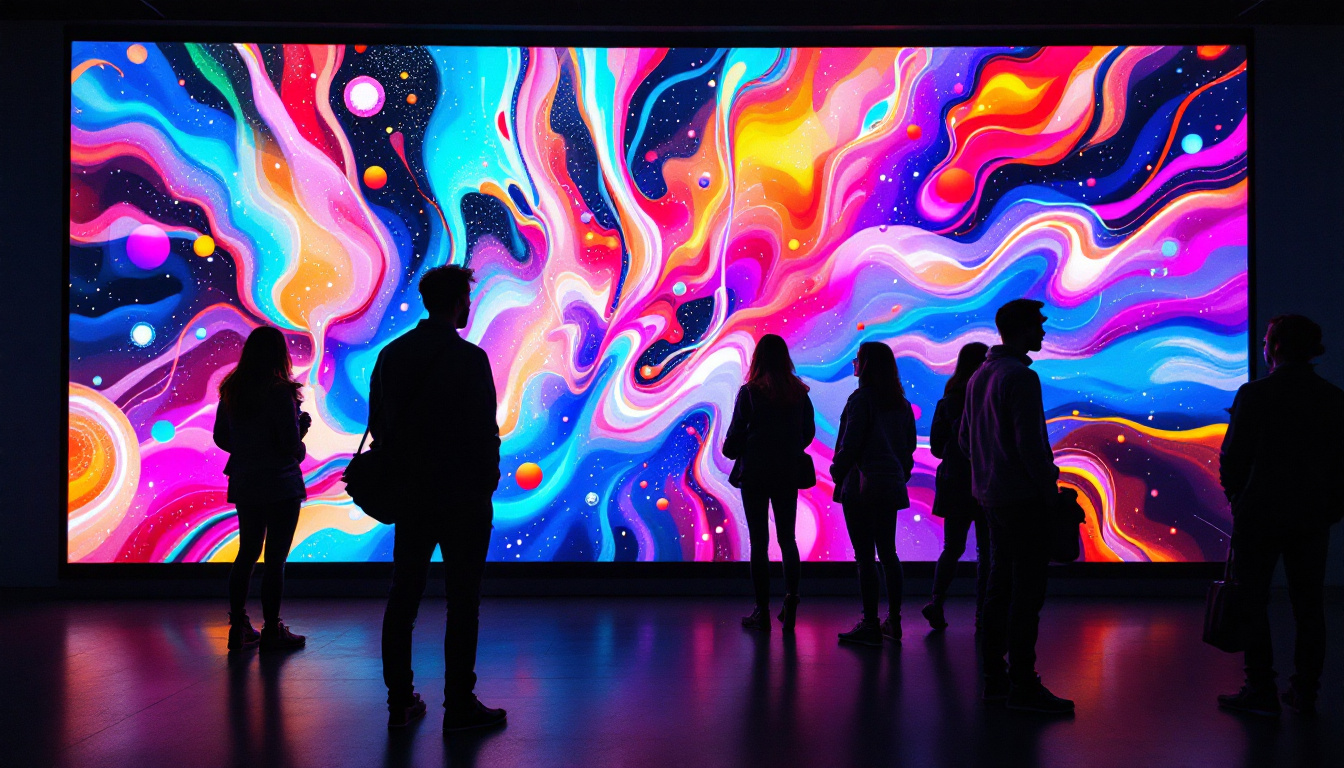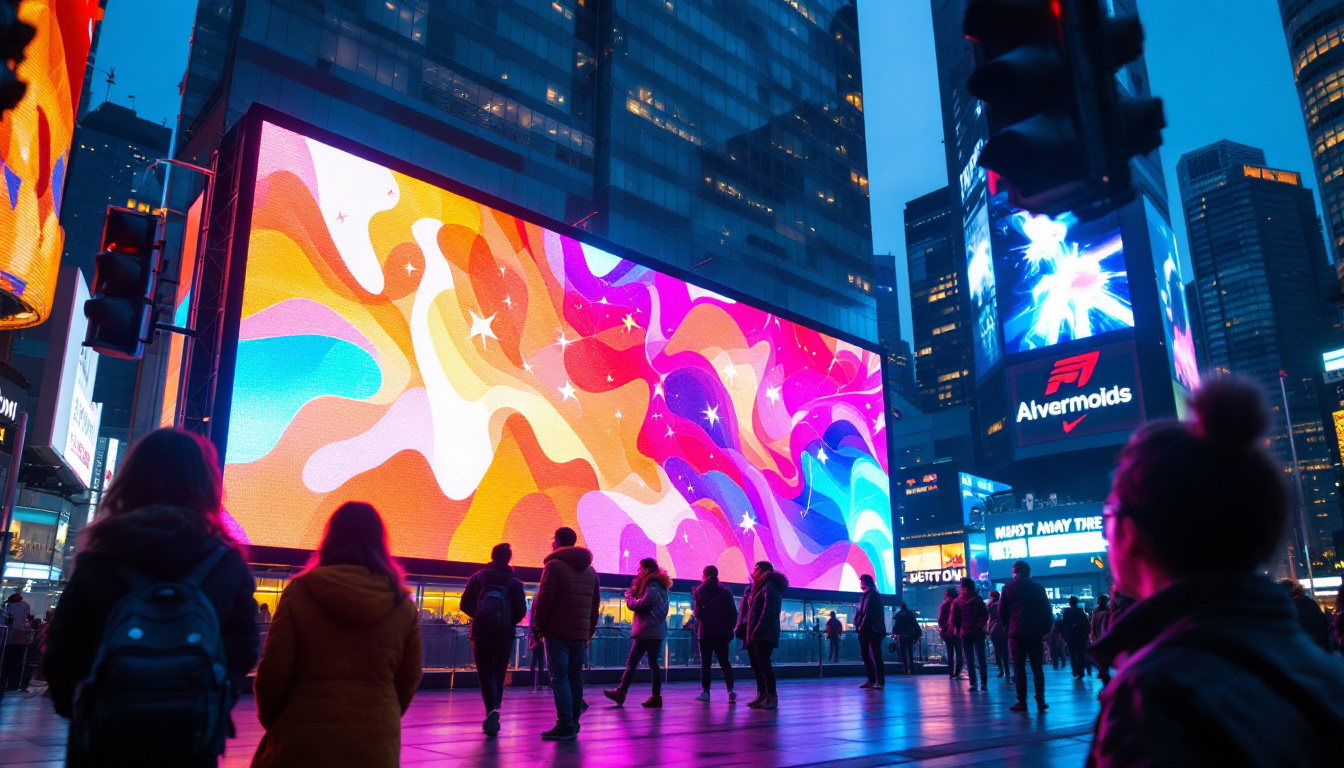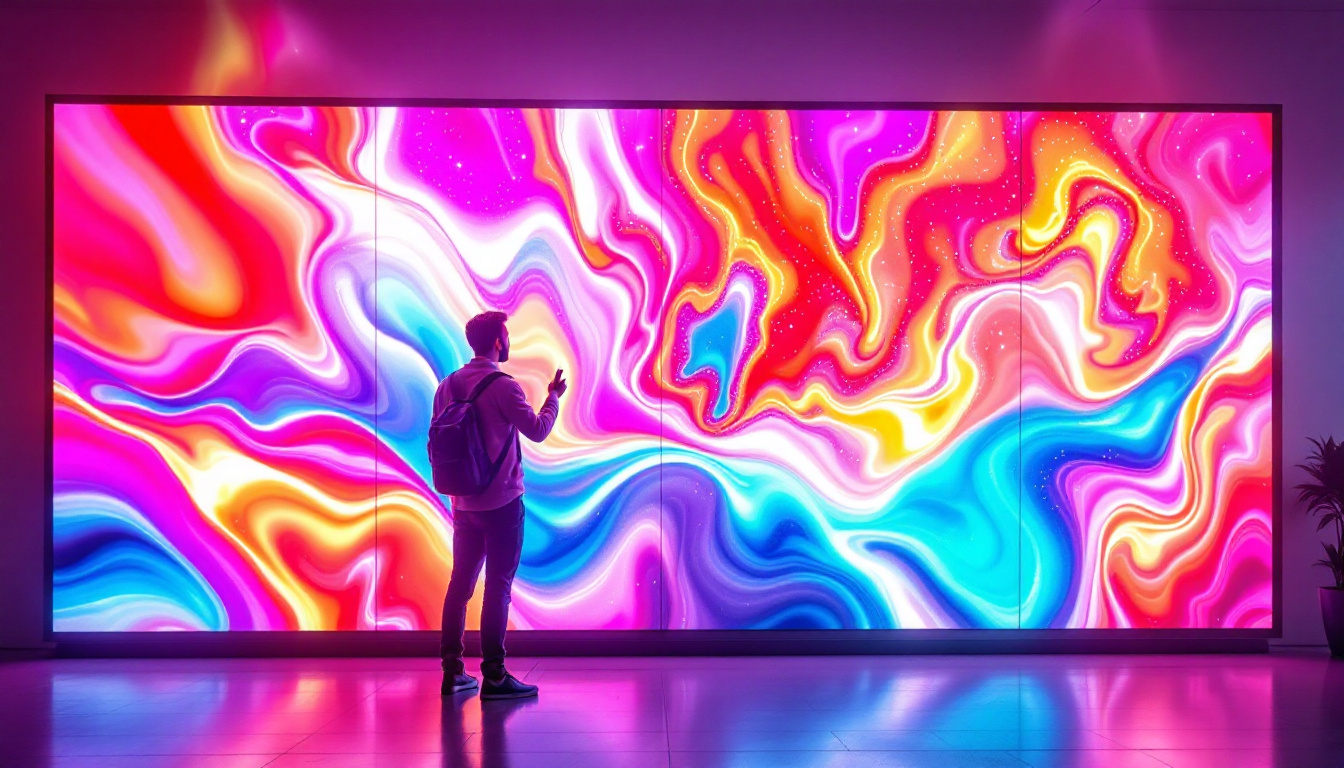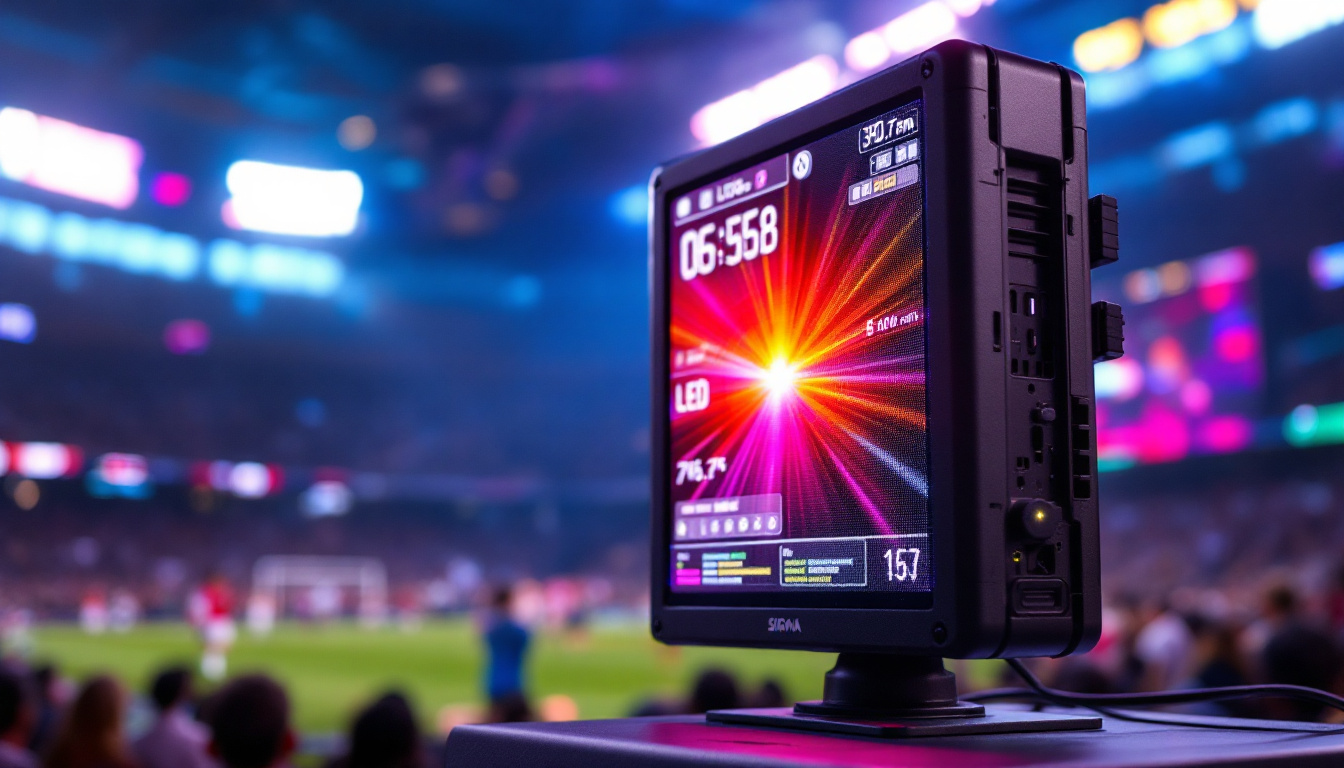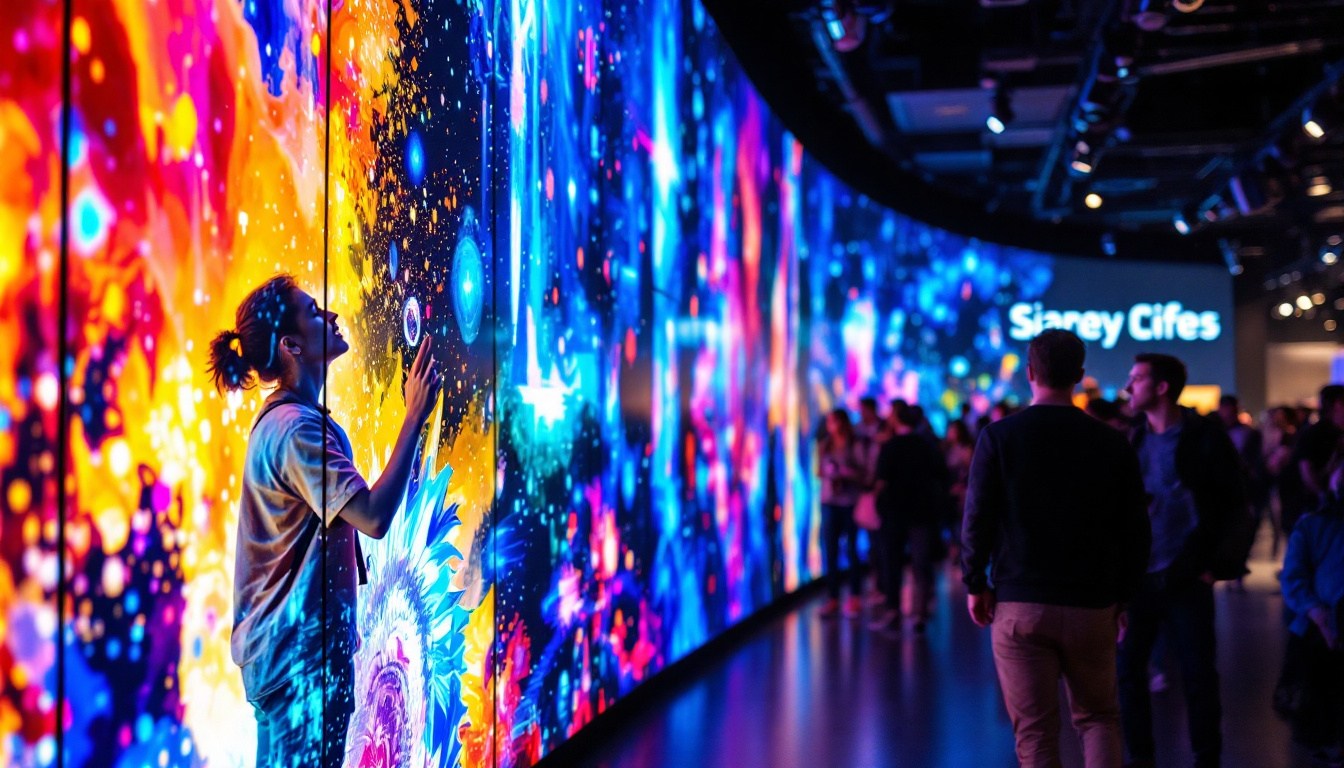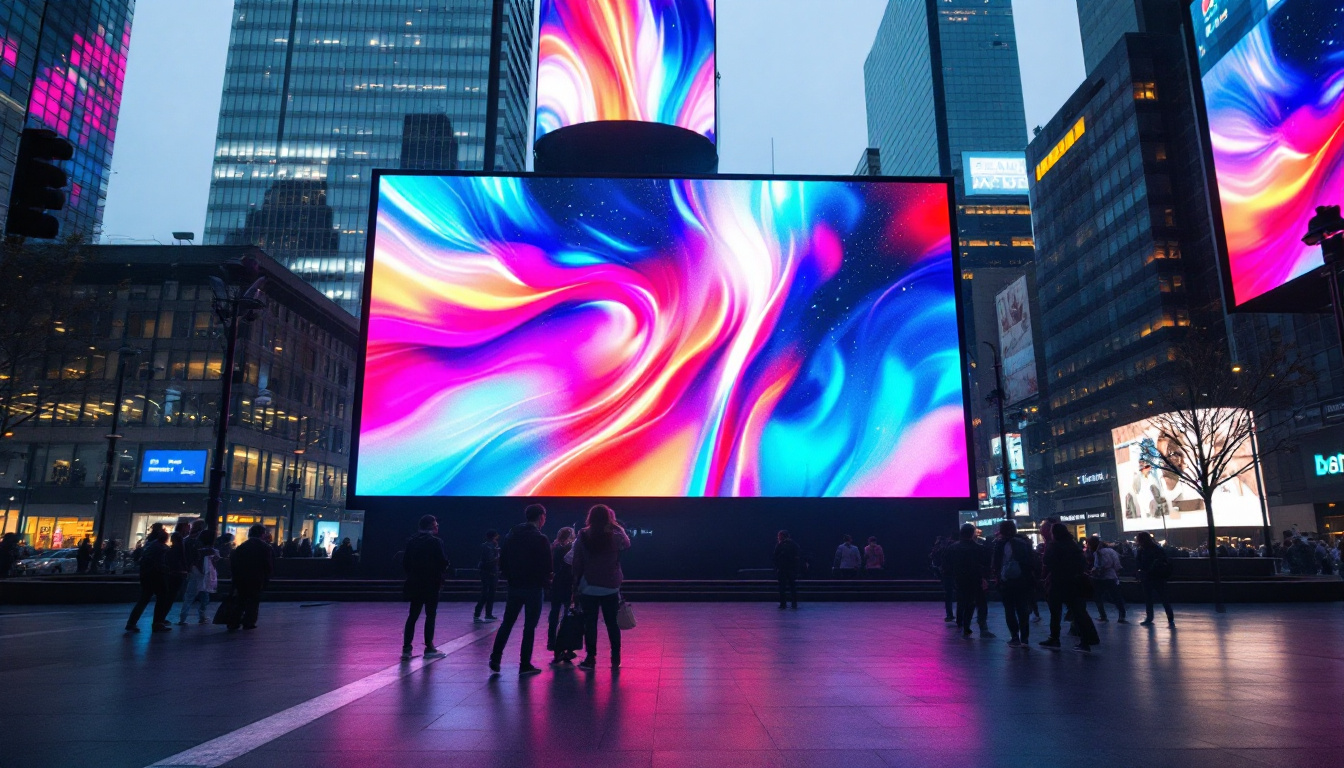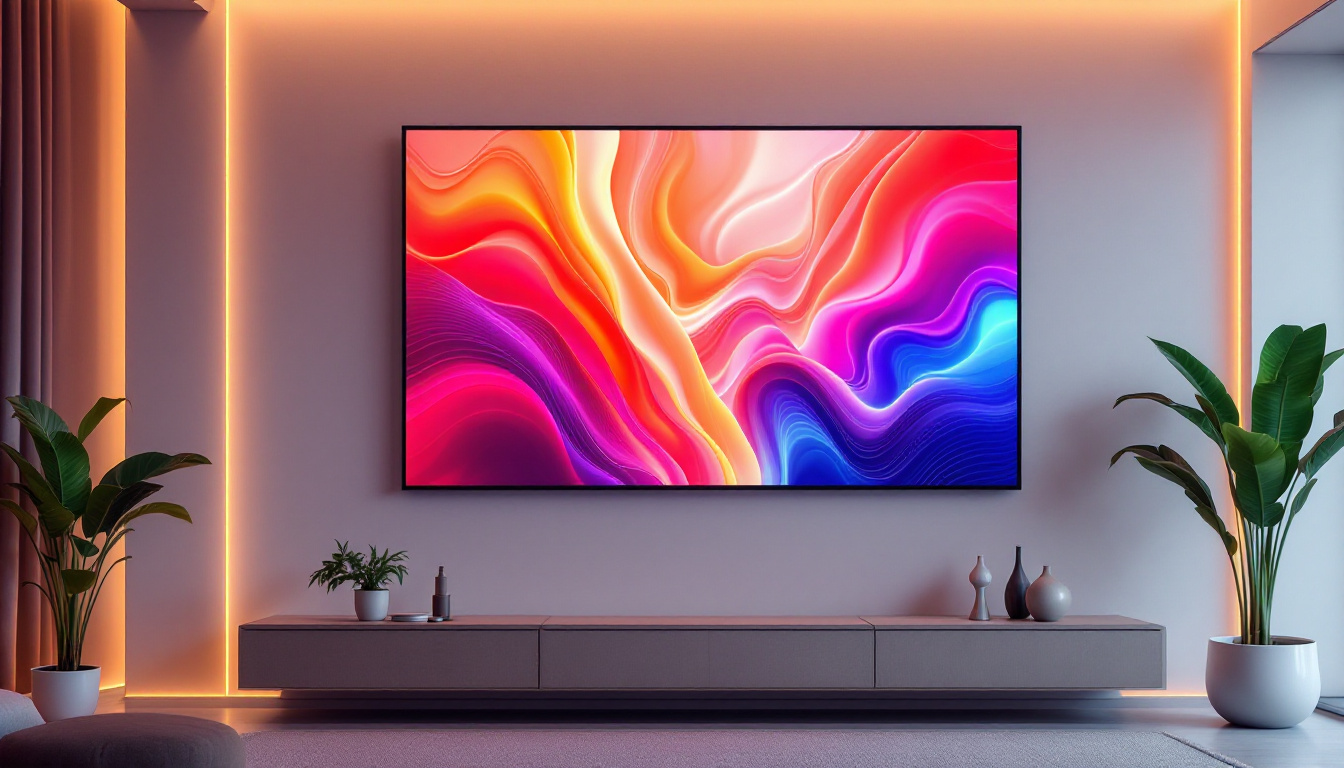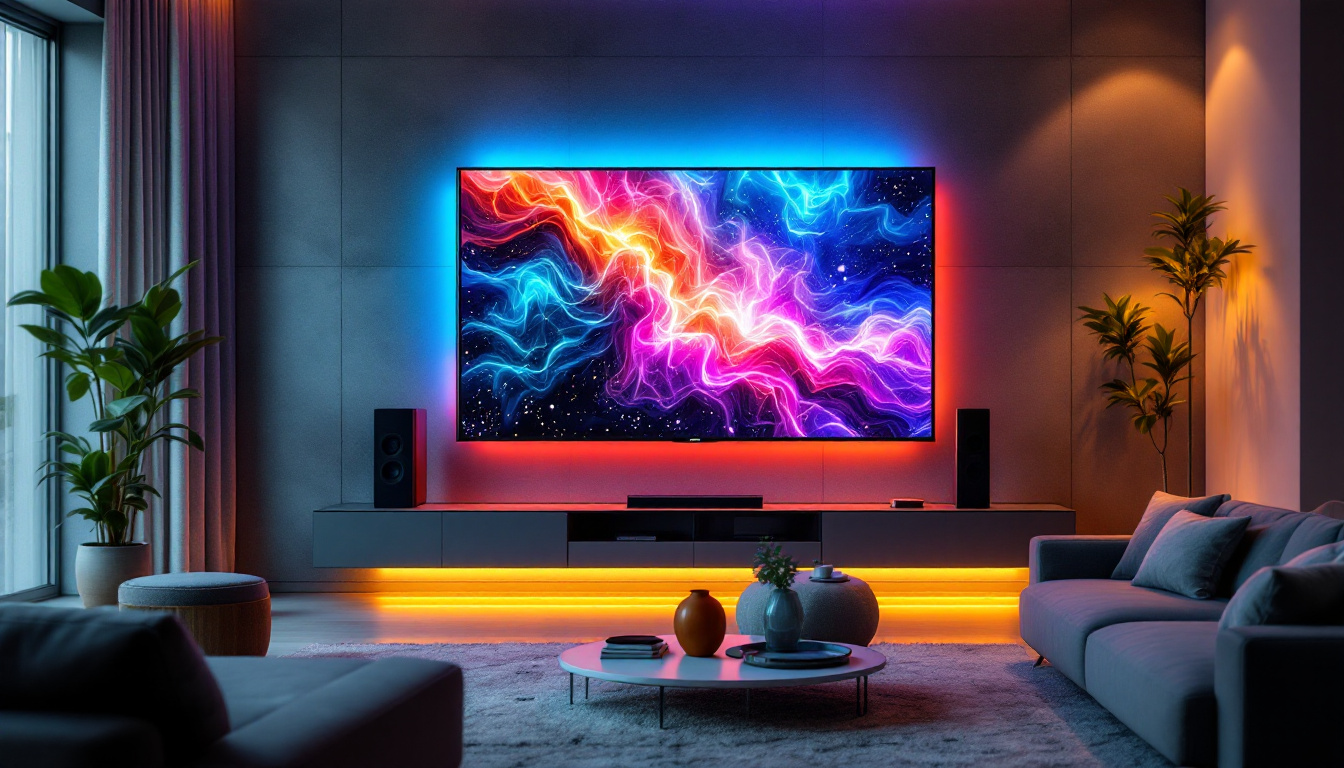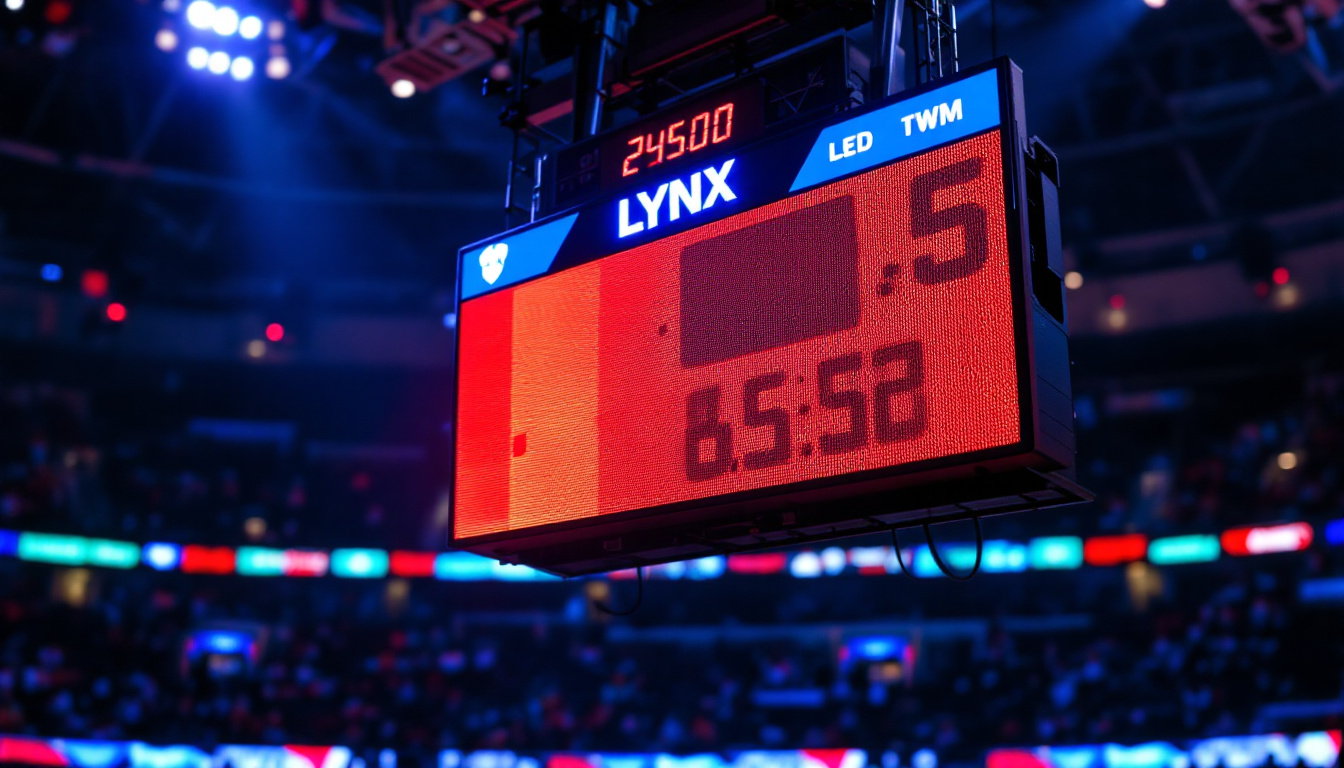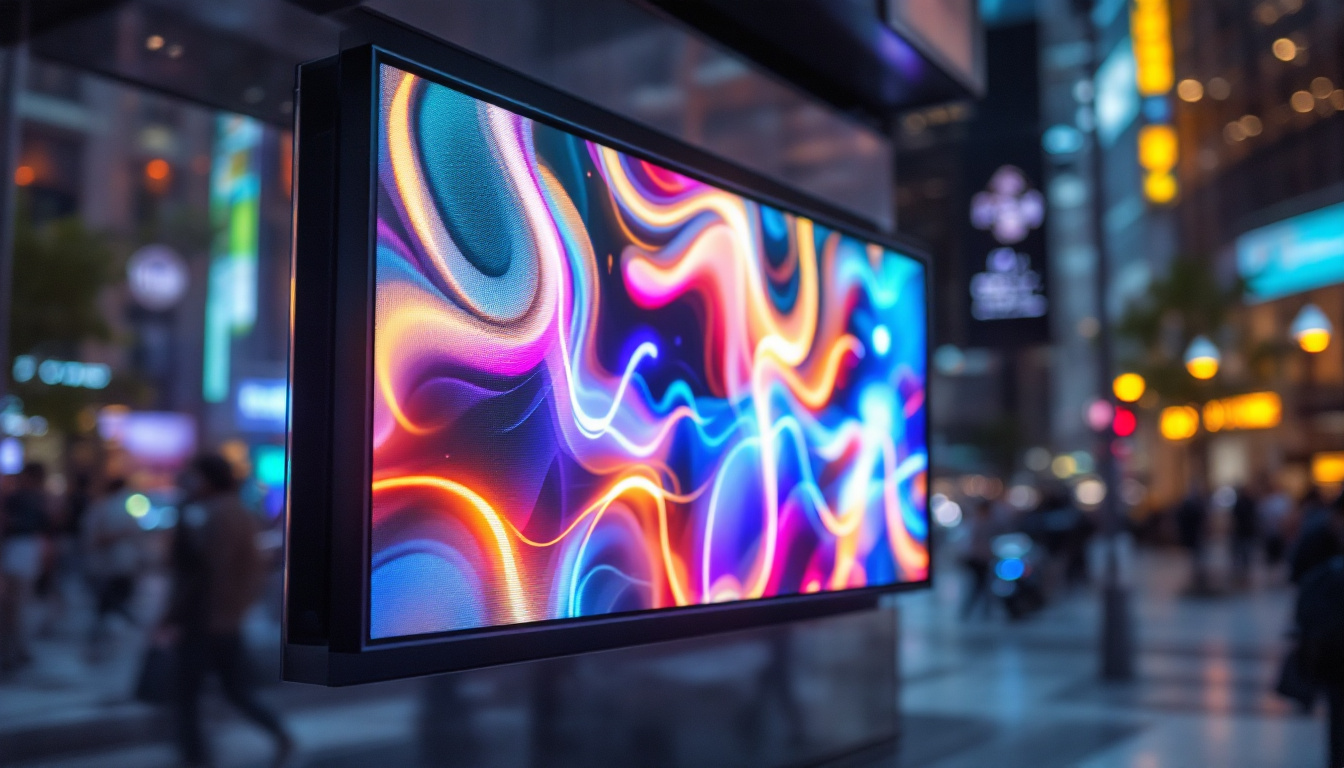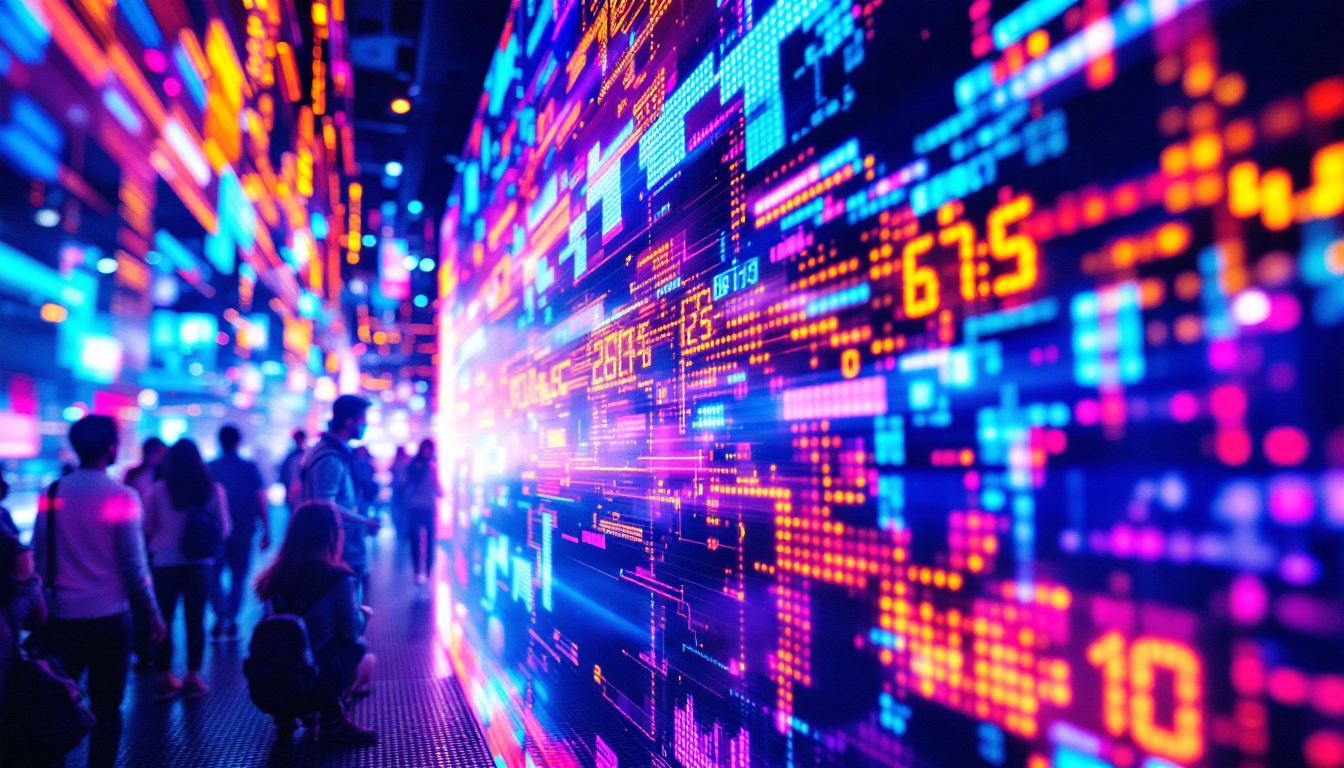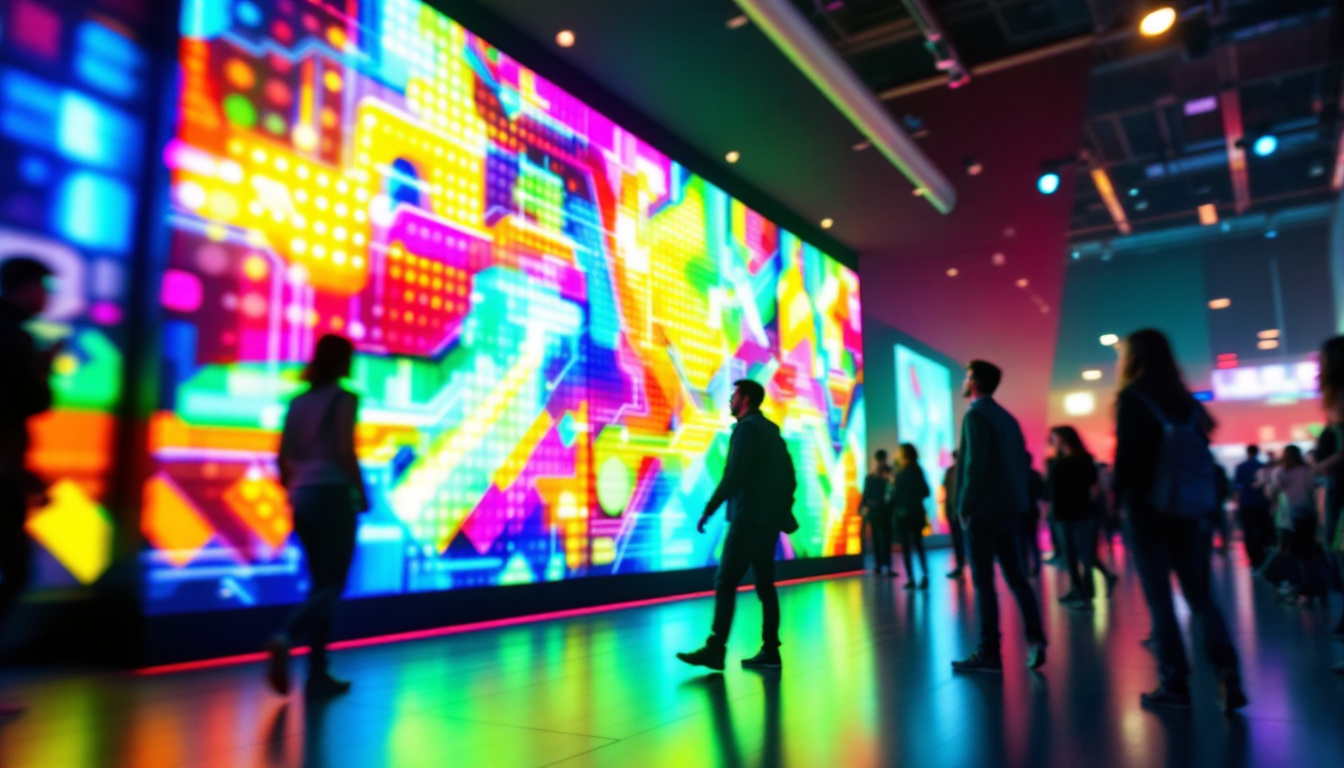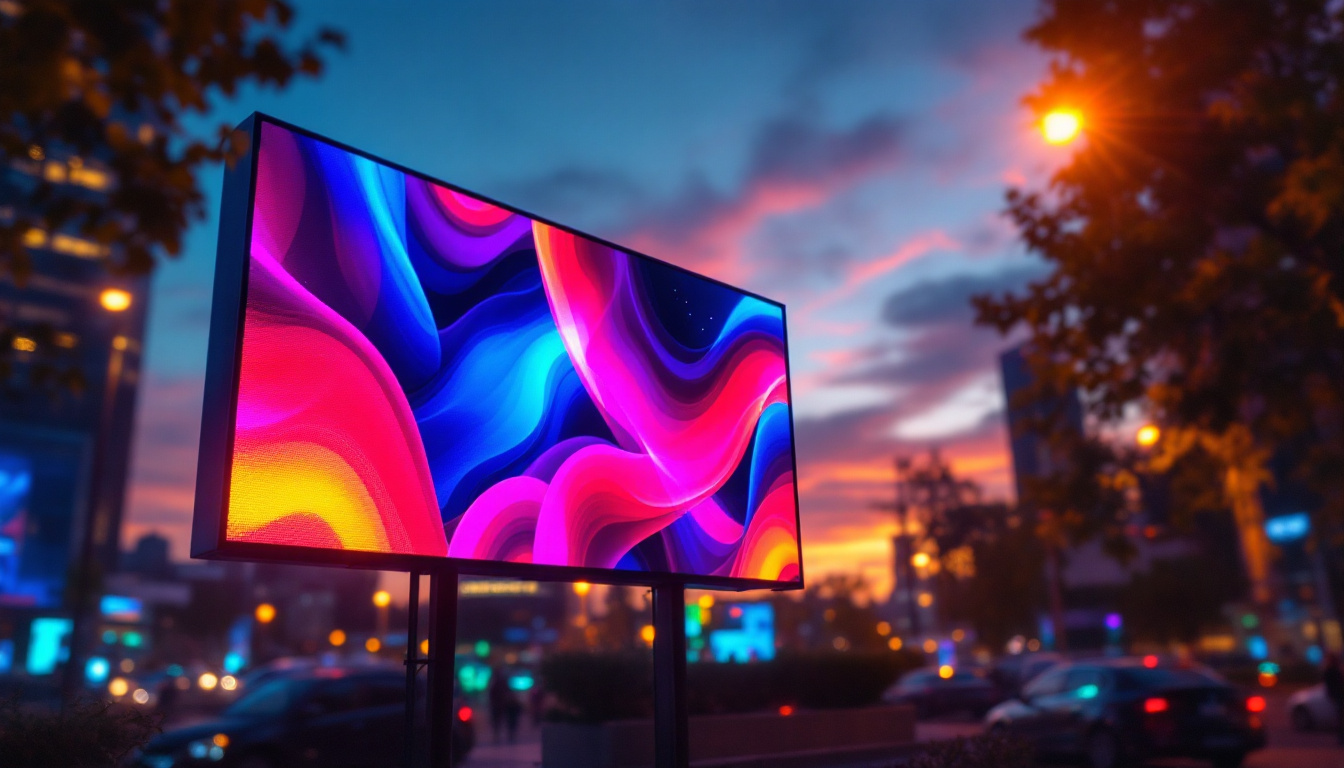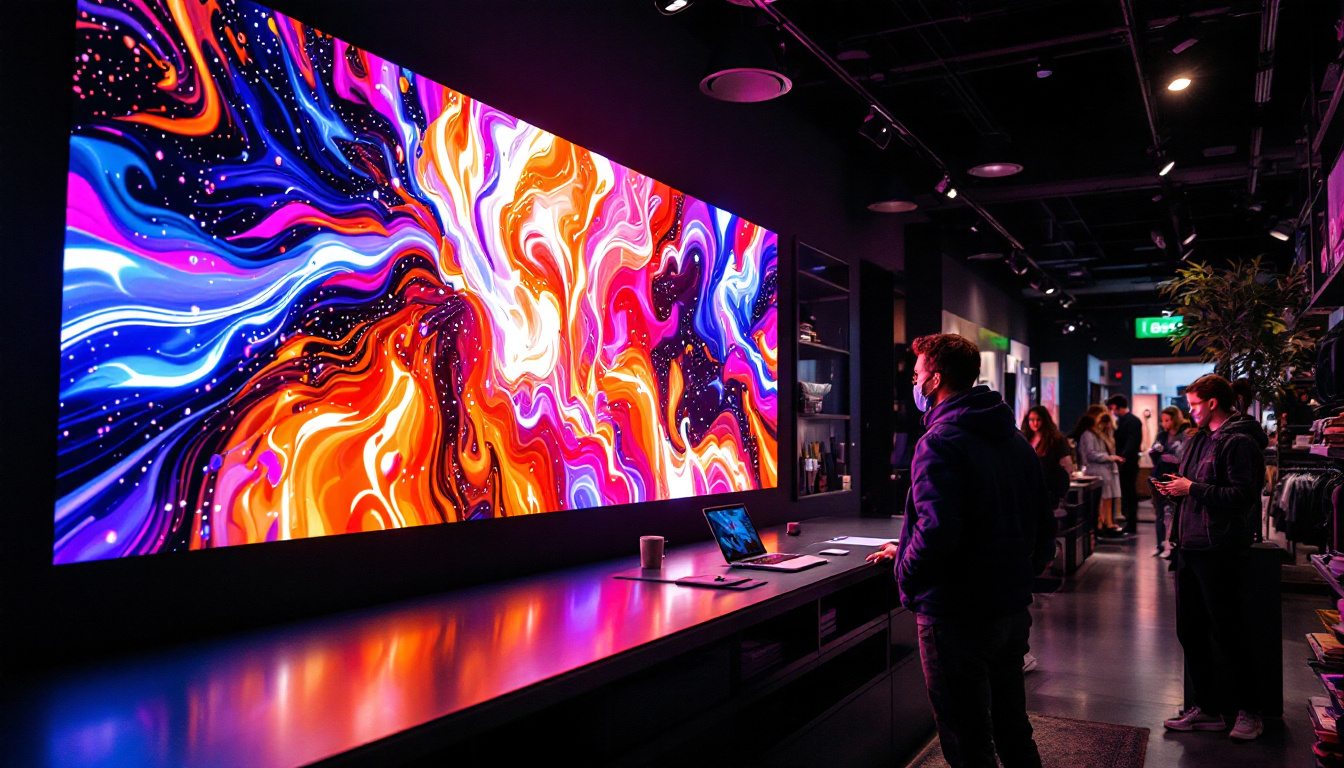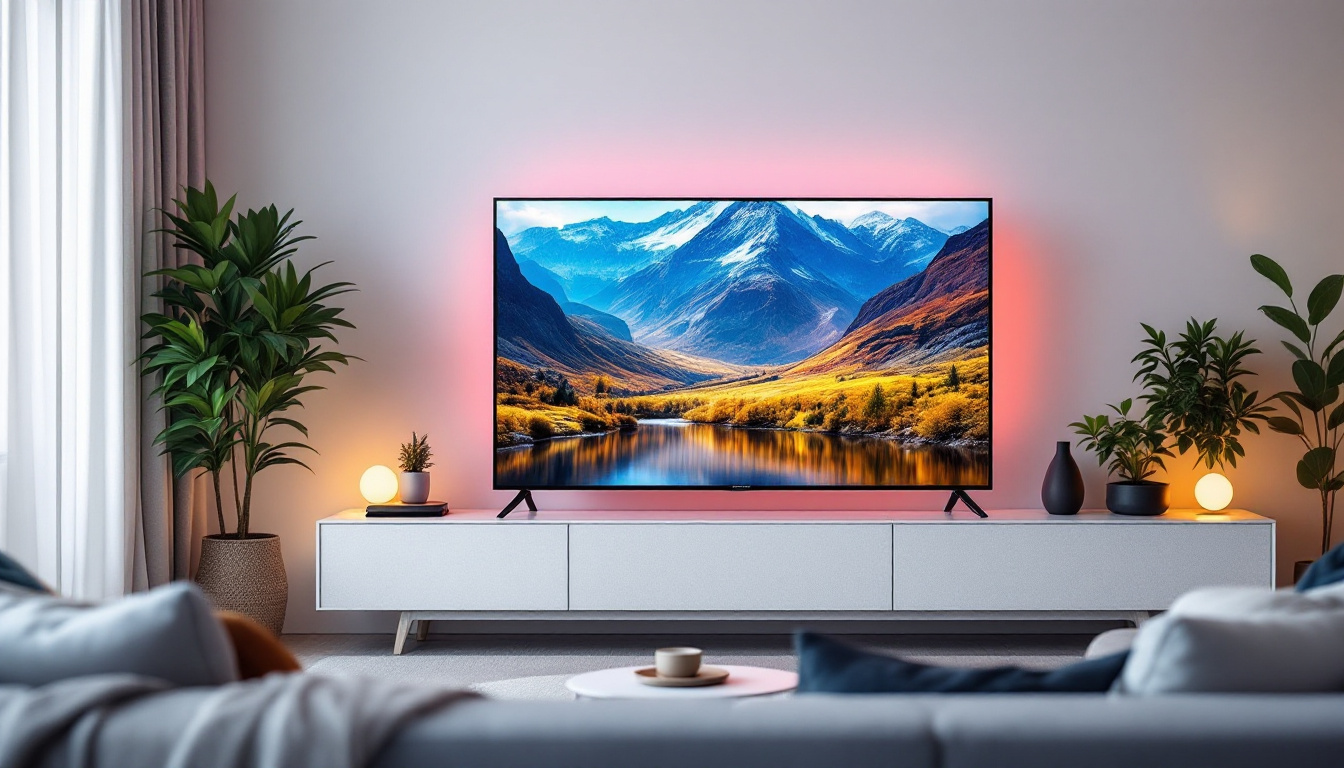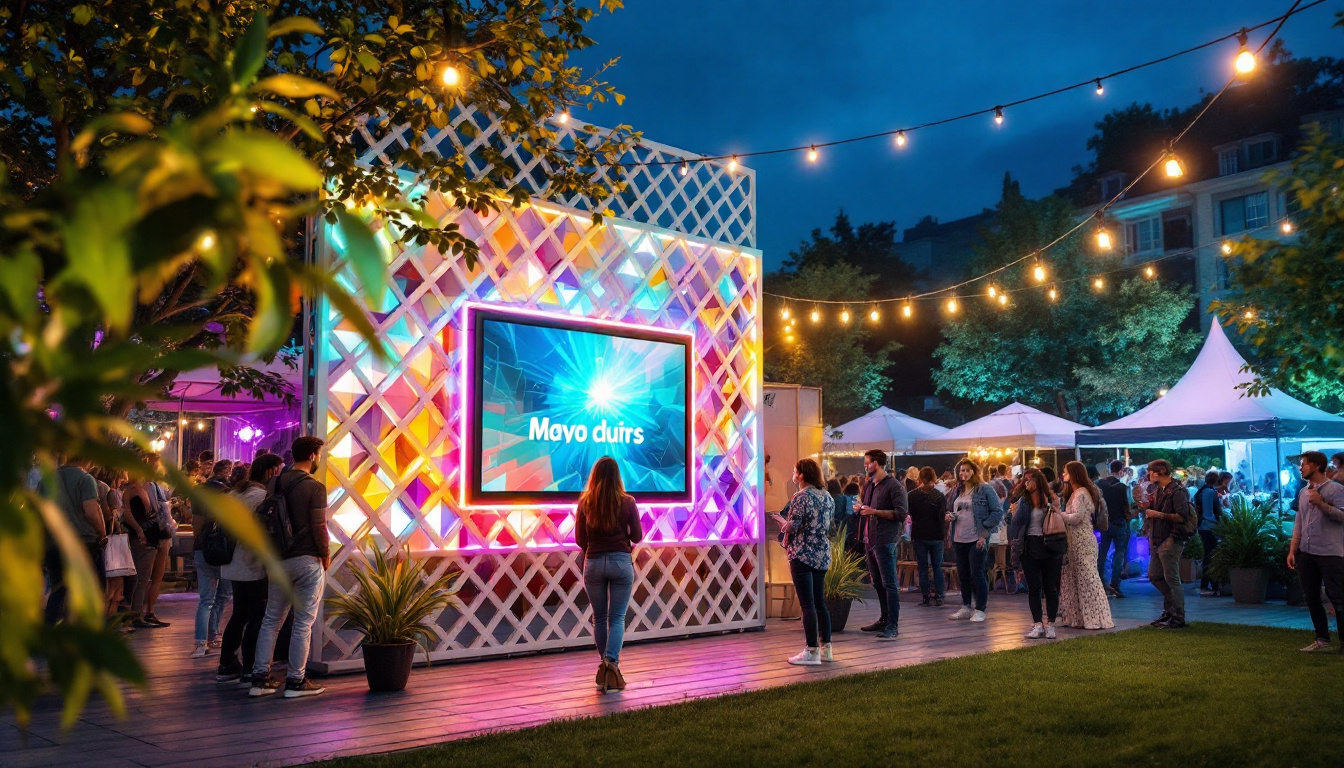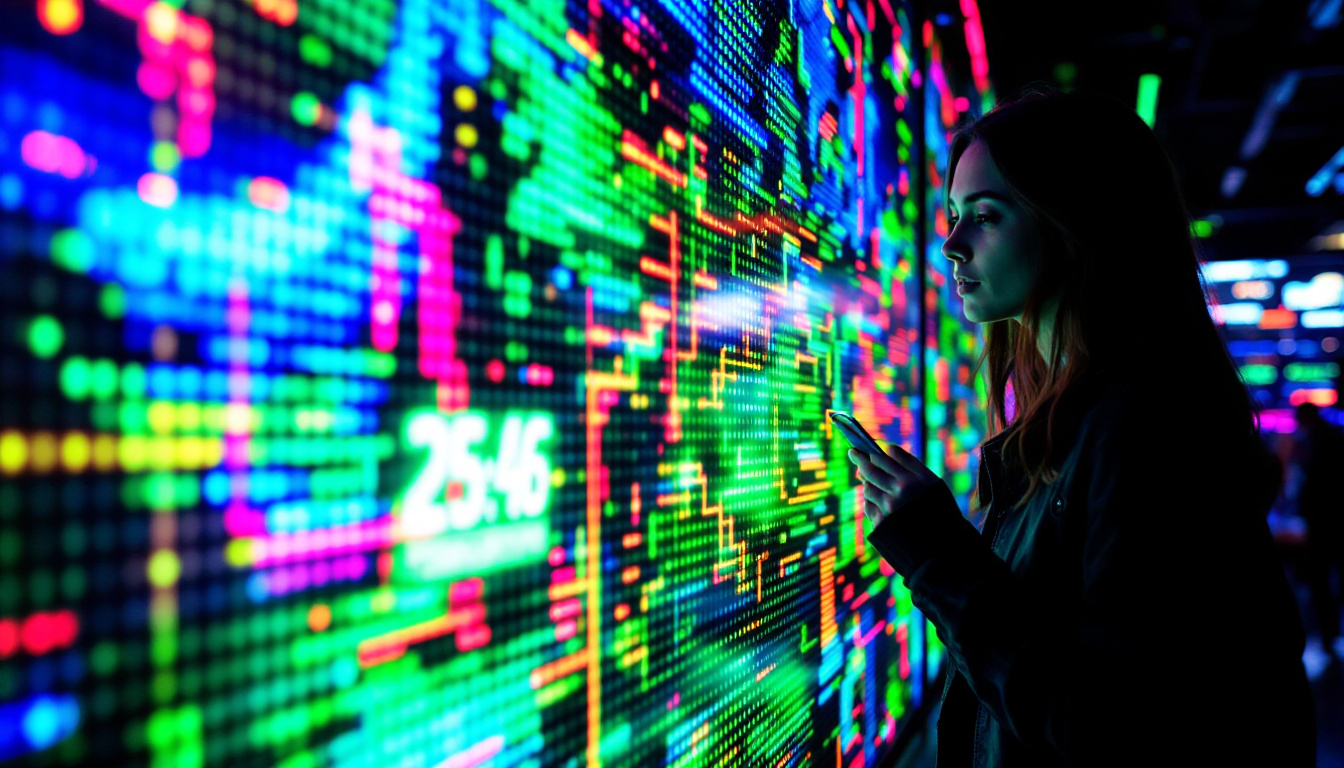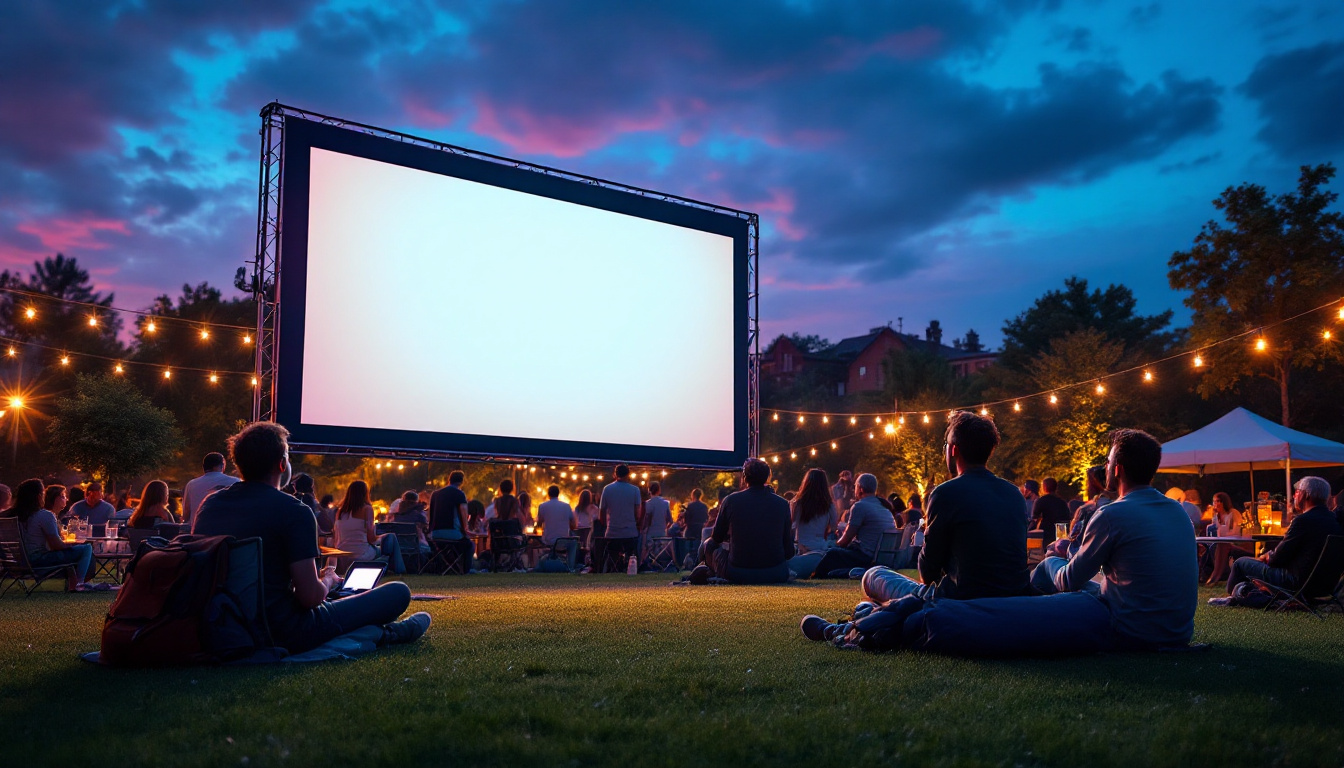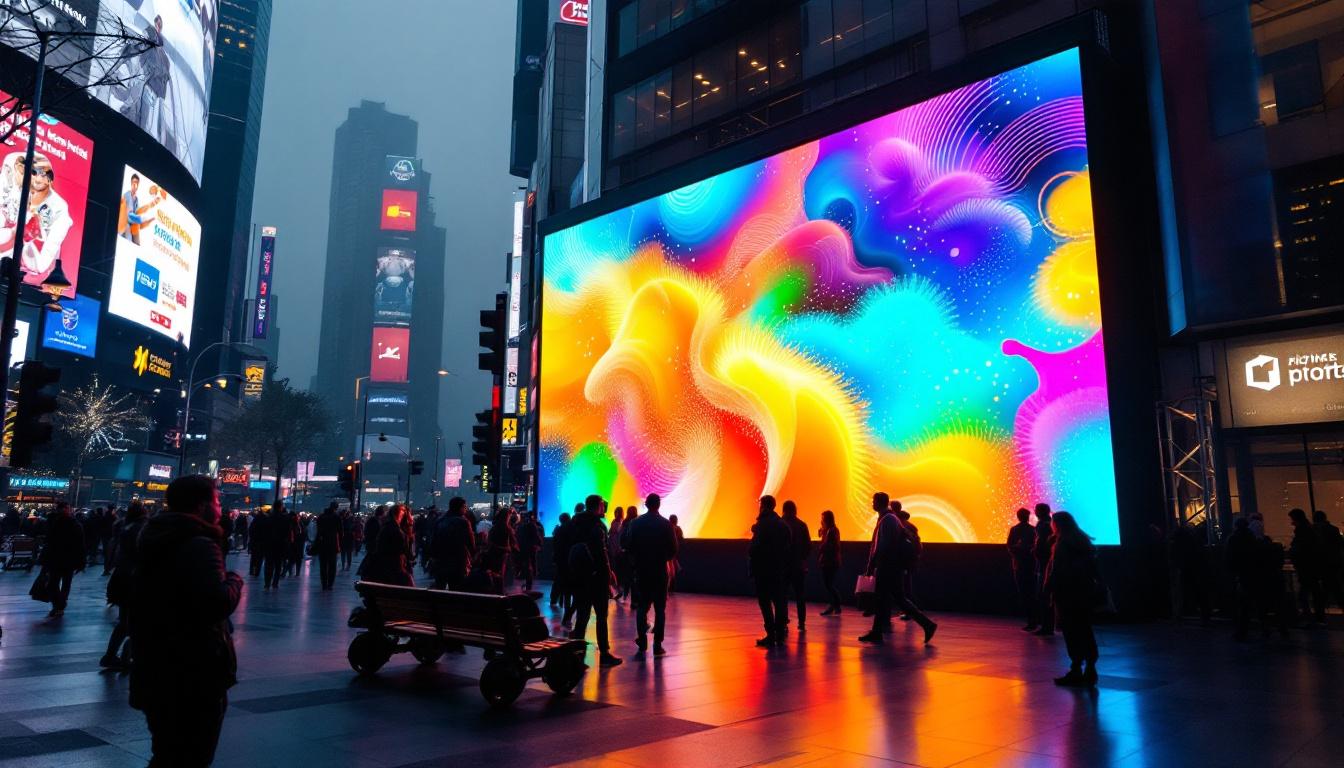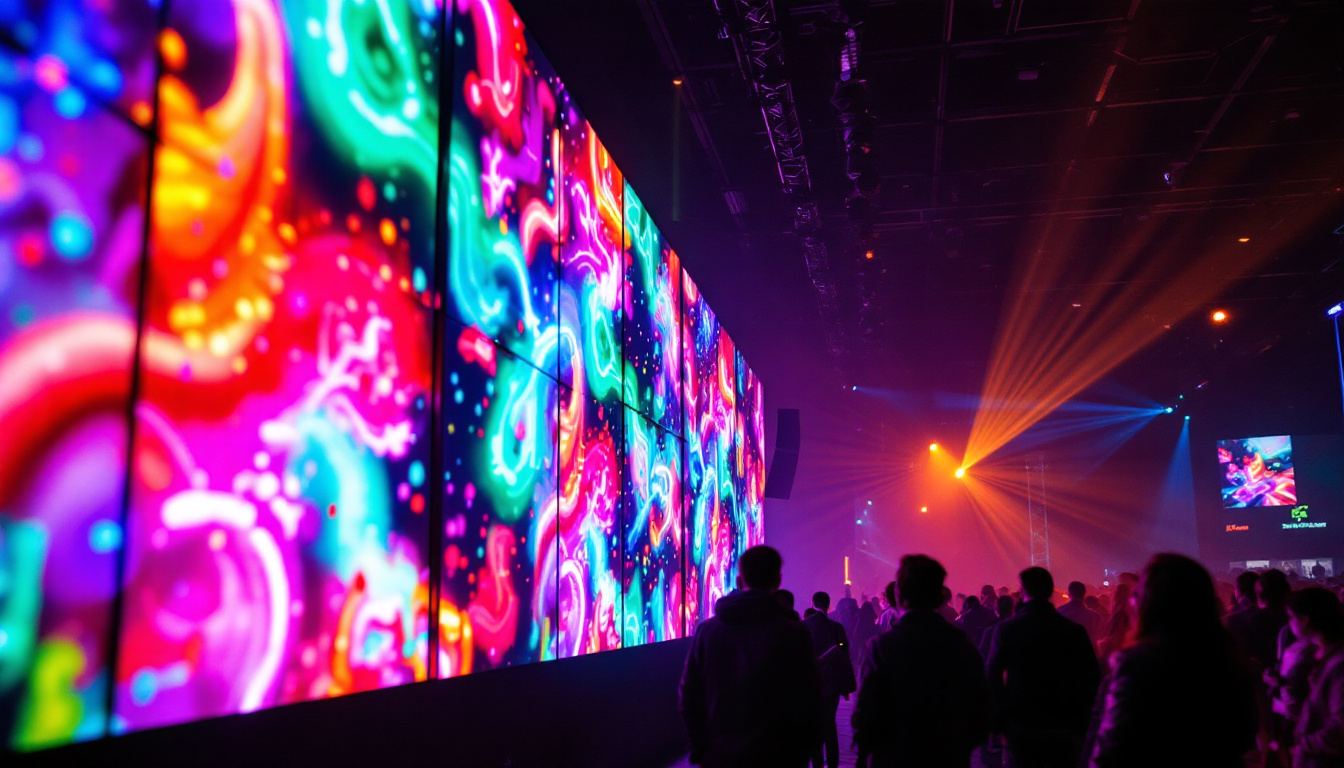In the heart of Vienna, Virginia, the address 1577 Spring Hill Rd stands as a testament to modern technology and design. This location is not just a point on the map; it is a hub for innovation, especially when it comes to LED display technology. As businesses and organizations increasingly turn to LED displays for advertising and information dissemination, understanding the intricacies of these systems becomes essential. This article delves into the world of LED displays, exploring their functionality, advantages, and the specific offerings at this notable address.
Understanding LED Display Technology
LED displays are becoming ubiquitous in various sectors, from retail to transportation. But what exactly are they, and how do they work? At their core, LED displays utilize light-emitting diodes (LEDs) to create images and text. These diodes emit light when an electric current passes through them, allowing for vibrant and dynamic visuals.
The Basics of LED Technology
LEDs are semiconductor devices that convert electrical energy into light. This technology has evolved significantly over the years, leading to the development of various types of LED displays, including full-color displays, monochrome displays, and even flexible LED screens. The versatility of LED technology allows for a wide range of applications, from large outdoor billboards to small indoor screens.
One of the primary advantages of LED displays is their energy efficiency. Compared to traditional lighting technologies, LEDs consume significantly less power, making them an environmentally friendly choice. Additionally, their long lifespan reduces the need for frequent replacements, further contributing to their sustainability. This longevity not only saves costs in maintenance but also minimizes waste, aligning with global efforts to promote eco-friendly technologies.
Types of LED Displays
LED displays can be categorized into several types based on their application and design. Some of the most common types include:
- Outdoor LED Displays: These are designed to withstand harsh weather conditions and are often used for advertising or information dissemination in public spaces.
- Indoor LED Displays: Typically used in venues like shopping malls, airports, and conference centers, these displays offer high-resolution visuals for close viewing.
- Transparent LED Displays: A newer innovation, these displays allow for visibility through the screen while still providing dynamic content, making them ideal for retail environments.
Beyond these common types, there are also specialized LED displays tailored for unique applications. For instance, LED video walls combine multiple screens to create a larger-than-life visual experience, often seen at concerts, sports events, and corporate presentations. Furthermore, advancements in technology have led to the emergence of interactive LED displays that engage users through touch or motion sensors, enhancing the viewer’s experience and making them an effective tool for marketing and communication.
Another exciting development in the realm of LED displays is the integration of smart technology. With the rise of the Internet of Things (IoT), LED displays can now be connected to the internet, allowing for real-time content updates and remote management. This capability is especially beneficial for businesses that need to change their advertising messages frequently or monitor display performance from afar. As a result, LED technology continues to evolve, pushing the boundaries of what is possible in visual communication.
The Advantages of LED Displays
LED displays offer numerous benefits that make them an attractive option for businesses and organizations. Understanding these advantages can help in making informed decisions about display technology.
High Visibility and Brightness
One of the standout features of LED displays is their brightness. They are capable of producing vivid colors and high contrast ratios, ensuring that content remains visible even in direct sunlight. This makes them particularly effective for outdoor advertising, where visibility is crucial.
Moreover, the ability to adjust brightness levels based on ambient light conditions means that LED displays can maintain optimal visibility at all times, enhancing the viewer’s experience. This adaptability not only improves readability but also conserves energy, as the display can dim in low-light environments, contributing to overall sustainability efforts.
Dynamic Content Capabilities
LED displays are not just static screens; they can showcase dynamic content that can be updated in real-time. This flexibility allows businesses to change advertisements, announcements, or information as needed, making them a powerful tool for communication.
For instance, a retail store can promote a flash sale with a vibrant animation on their LED display, attracting customers’ attention and driving foot traffic. The ability to display videos, animations, and live feeds further enhances the engagement factor. Additionally, businesses can utilize social media feeds, weather updates, or news headlines, creating a more interactive experience that keeps viewers informed and entertained. This real-time capability not only boosts customer engagement but also allows for timely marketing strategies that can adapt to current trends or events, maximizing the impact of promotional efforts.
Energy Efficiency
Another significant advantage of LED displays is their energy efficiency. Compared to traditional display technologies, such as LCD or plasma screens, LED displays consume considerably less power. This reduction in energy usage not only lowers operational costs but also aligns with eco-friendly initiatives that many organizations are striving to adopt.
Furthermore, the long lifespan of LED technology means fewer replacements and less electronic waste, making it a sustainable choice for businesses looking to minimize their environmental footprint. The durability of LED displays also contributes to their cost-effectiveness, as they are less prone to damage and require less frequent maintenance, ensuring that businesses can focus their resources on other critical areas.
Applications of LED Displays at 1577 Spring Hill Rd
The location at 1577 Spring Hill Rd in Vienna, VA, exemplifies the practical applications of LED display technology. Various businesses and organizations in the area utilize LED displays for different purposes, showcasing the versatility of this technology.
Retail and Advertising
In the competitive retail landscape, businesses at this address leverage LED displays to capture the attention of potential customers. Eye-catching advertisements and promotional content are displayed prominently, ensuring that passersby are informed of the latest offers and products.
Additionally, LED displays can be programmed to change content based on time of day or specific events, allowing retailers to tailor their messaging to different audiences. This adaptability is a significant advantage in the fast-paced world of retail.
Corporate Communication
Many organizations at 1577 Spring Hill Rd utilize LED displays for internal communication. These displays serve as digital bulletin boards, providing employees with important updates, announcements, and event information.
By using LED technology, companies can ensure that information is communicated effectively and efficiently, reducing the reliance on paper-based communication methods. This not only enhances information dissemination but also contributes to a more sustainable workplace.
Installation and Maintenance Considerations
While the benefits of LED displays are clear, it is essential to consider the installation and maintenance aspects to ensure long-term functionality and performance.
Professional Installation
Installing an LED display is not a DIY project. It requires professional expertise to ensure that the display is set up correctly and safely. Factors such as location, mounting options, and electrical requirements must be carefully considered during the installation process.
At 1577 Spring Hill Rd, businesses often collaborate with specialized companies that focus on LED display installation. These professionals can assess the specific needs of each organization and recommend the best solutions for their requirements.
Regular Maintenance
To keep LED displays functioning optimally, regular maintenance is crucial. This includes routine checks for any potential issues, cleaning the screens to prevent dust buildup, and ensuring that software is up to date.
Many businesses opt for maintenance contracts with service providers to ensure that their displays remain in top condition. This proactive approach minimizes downtime and extends the lifespan of the display.
Future Trends in LED Display Technology
The world of LED display technology is constantly evolving. Innovations are emerging that promise to enhance the capabilities and applications of these displays even further.
Advancements in Resolution and Color
As technology advances, the resolution of LED displays continues to improve. High-definition and even ultra-high-definition displays are becoming more common, providing sharper images and more vibrant colors. This trend is particularly significant for applications where visual quality is paramount, such as in entertainment venues and high-end retail environments.
Additionally, advancements in color accuracy and brightness are making LED displays more versatile, allowing them to be used in a wider range of settings and applications.
Integration with Smart Technology
The integration of LED displays with smart technology is another exciting trend. Displays can now be connected to the internet, enabling remote management and content updates. This connectivity allows businesses to control their displays from anywhere, making it easier to manage advertising campaigns and internal communications.
Moreover, the use of sensors and data analytics can enhance the effectiveness of LED displays. For example, displays can adjust their content based on viewer demographics or engagement levels, leading to more targeted and effective messaging.
Conclusion
The address 1577 Spring Hill Rd in Vienna, VA, is more than just a location; it represents a convergence of technology, innovation, and effective communication through LED displays. Understanding the intricacies of LED technology, its applications, and future trends is essential for businesses looking to harness its potential.
As LED displays continue to evolve, they will undoubtedly play an increasingly vital role in how businesses communicate with their audiences. Whether for advertising, information dissemination, or internal communication, the benefits of LED displays are clear and compelling.
For those considering an investment in LED display technology, the insights provided in this article serve as a valuable resource. Embracing this technology can lead to enhanced visibility, engagement, and ultimately, success in a competitive landscape.
Discover LumenMatrix LED Display Solutions
Ready to elevate your visual communication strategy with the latest in LED display technology? Look no further than LumenMatrix, a pioneer in crafting LED display modules that not only enhance brand visibility but also create immersive visual experiences. From Indoor and Outdoor LED Wall Displays to innovative solutions like Vehicle LED Displays, LED Posters, and Custom LED Displays, LumenMatrix is at the forefront of transforming how businesses engage and captivate their audiences. Experience the future of digital signage with LumenMatrix and let your message shine with unparalleled clarity and impact. Check out LumenMatrix LED Display Solutions today and take the first step towards transforming your communication efforts.

